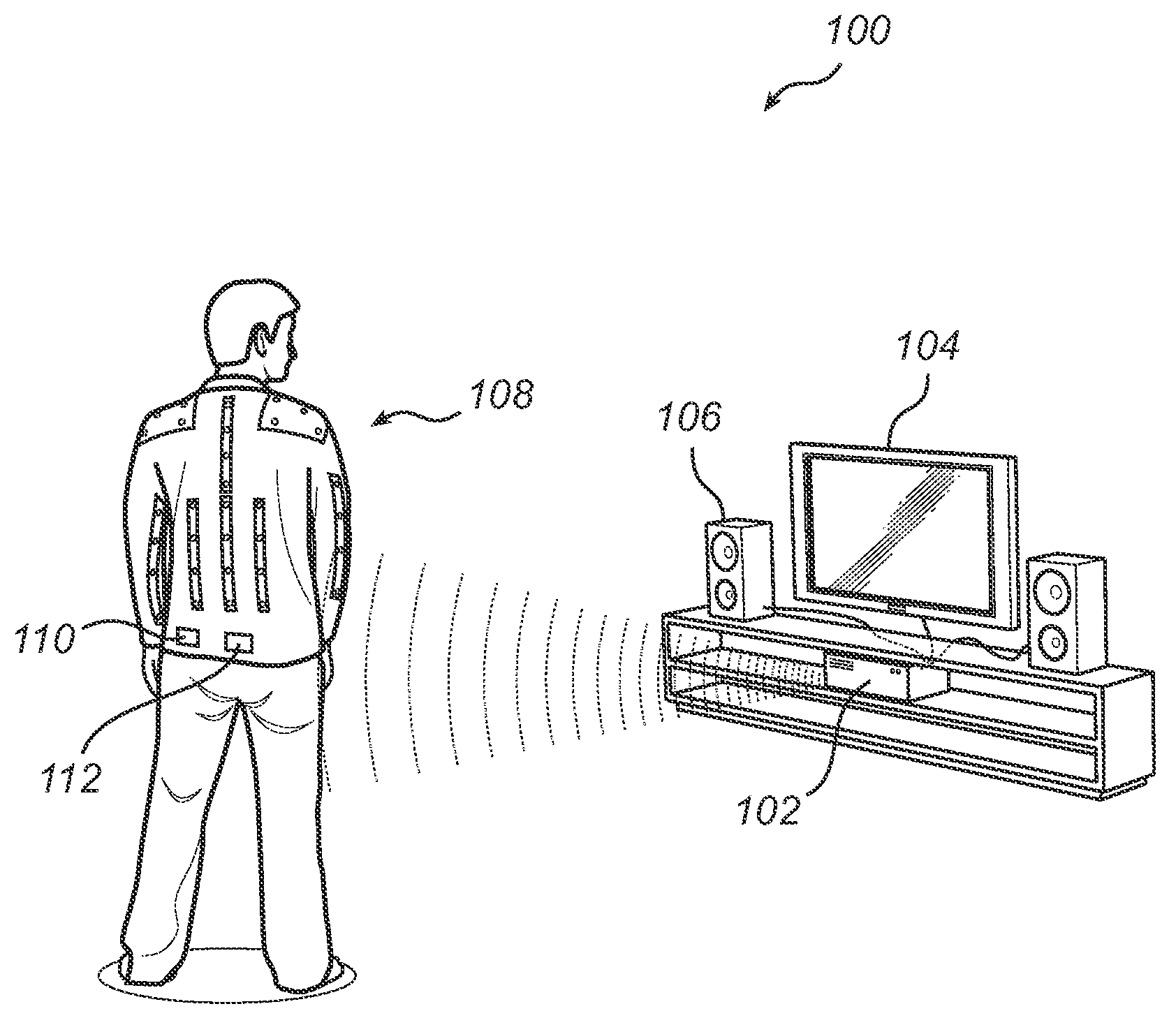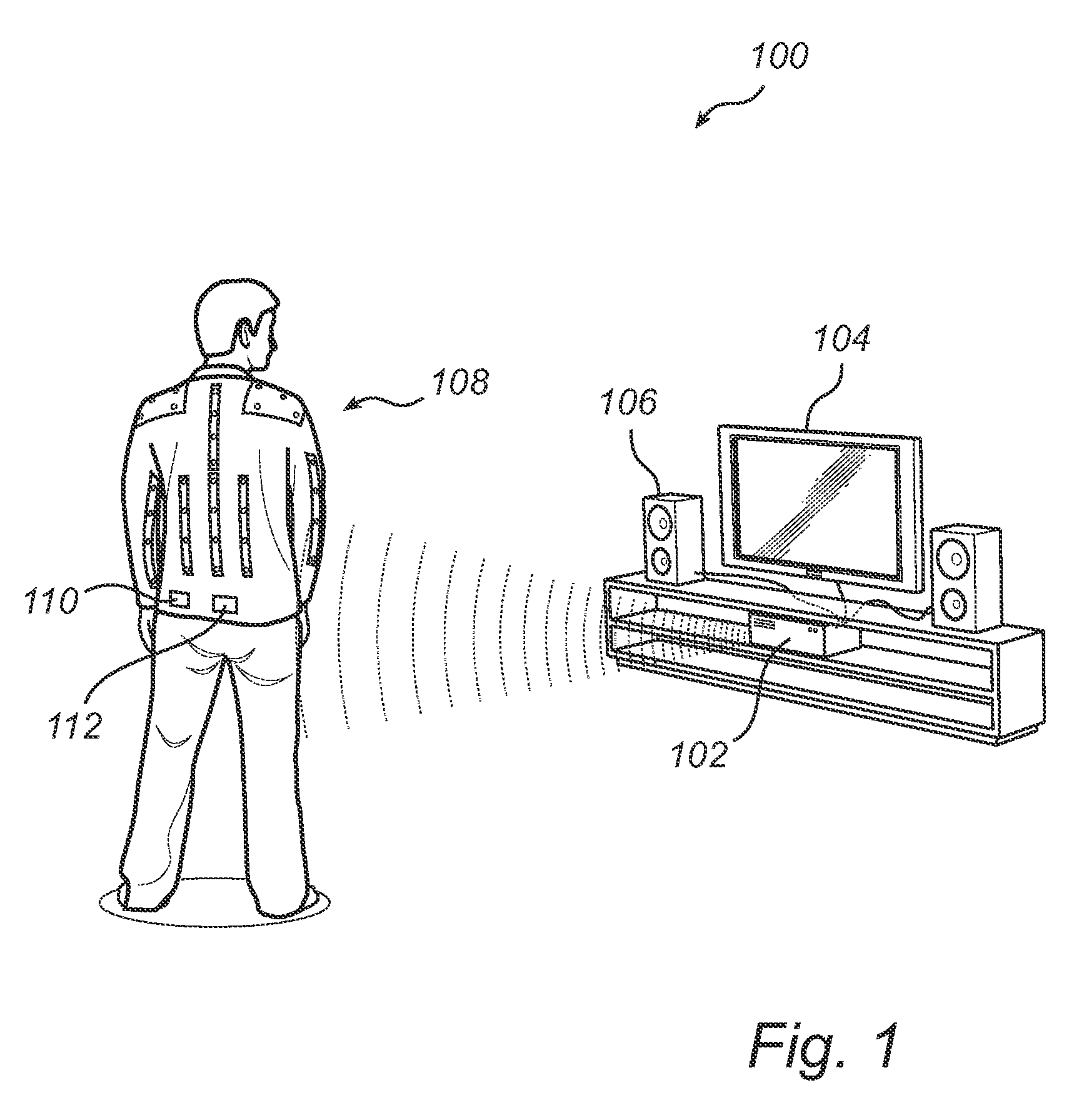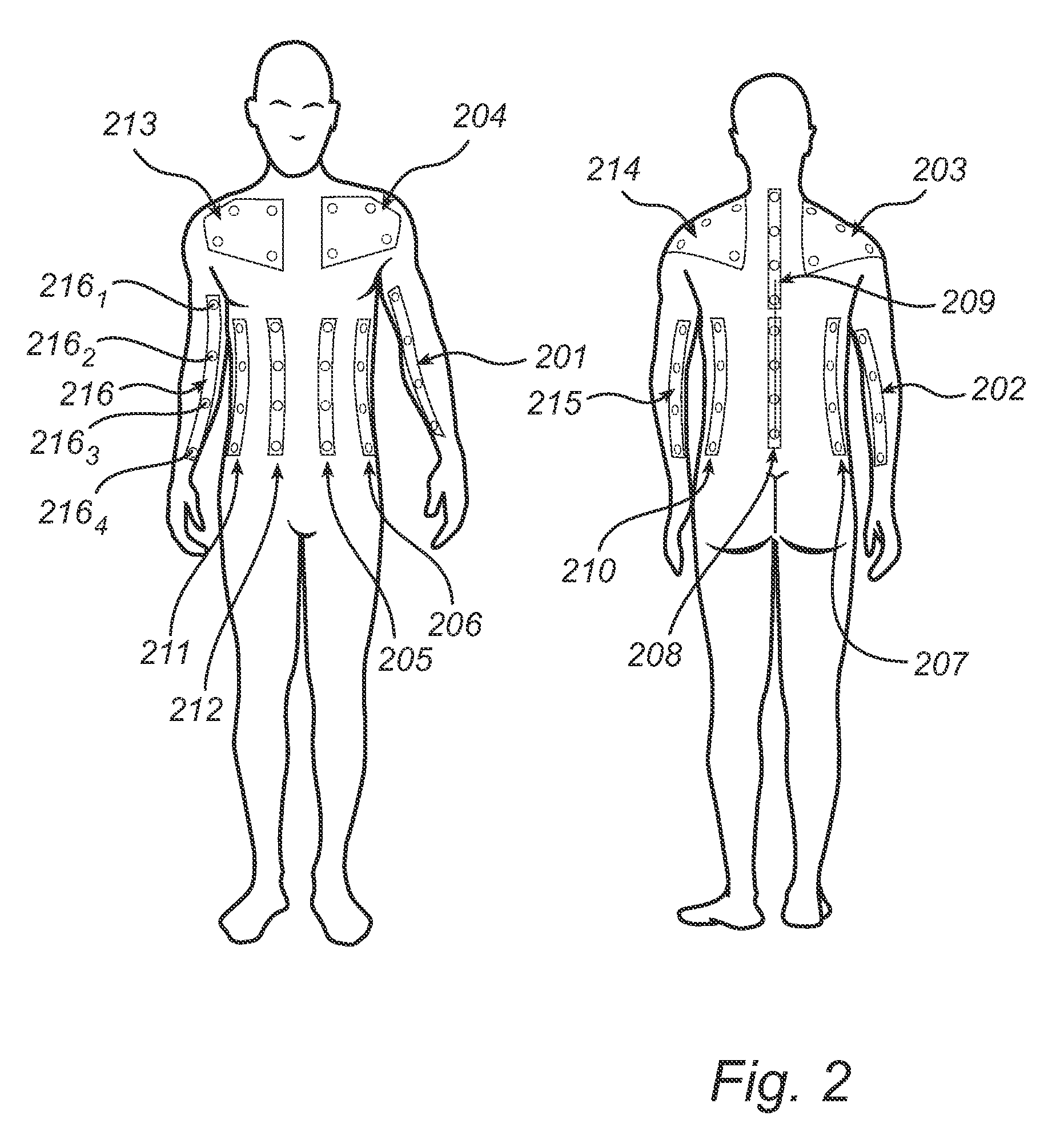Method and system for conveying an emotion
a technology of emotion and system, applied in the field of method for conveying emotion, can solve the problems of too blunt to be applicable for evoking and/or conveying more generic stimulation to a person, and achieve the effects of strengthening an emotion, strengthening an emotion, and strengthening an emotion
- Summary
- Abstract
- Description
- Claims
- Application Information
AI Technical Summary
Benefits of technology
Problems solved by technology
Method used
Image
Examples
Embodiment Construction
[0023]The present invention will now be described more fully hereinafter with reference to the accompanying drawings, in which currently preferred embodiments of the invention are shown. This invention may, however, be embodied in many different forms and should not be construed as limited to the embodiments set forth herein; rather, these embodiments are provided for thoroughness and completeness, and fully convey the scope of the invention to the skilled addressee. Like reference characters refer to like elements throughout.
[0024]Referring now to the drawings and to FIG. 1 in particular, there is depicted a tactile stimulation system 100 according to a currently preferred embodiment of the invention. The system 100 comprises a metadata player 102 which is connected to a video rendering device 104, an audio rendering device 106, and a tactile rendering device 108.
[0025]The metadata player 102 is an electronic device capable of extracting tactile stimulation information from a metad...
PUM
 Login to View More
Login to View More Abstract
Description
Claims
Application Information
 Login to View More
Login to View More - R&D
- Intellectual Property
- Life Sciences
- Materials
- Tech Scout
- Unparalleled Data Quality
- Higher Quality Content
- 60% Fewer Hallucinations
Browse by: Latest US Patents, China's latest patents, Technical Efficacy Thesaurus, Application Domain, Technology Topic, Popular Technical Reports.
© 2025 PatSnap. All rights reserved.Legal|Privacy policy|Modern Slavery Act Transparency Statement|Sitemap|About US| Contact US: help@patsnap.com



